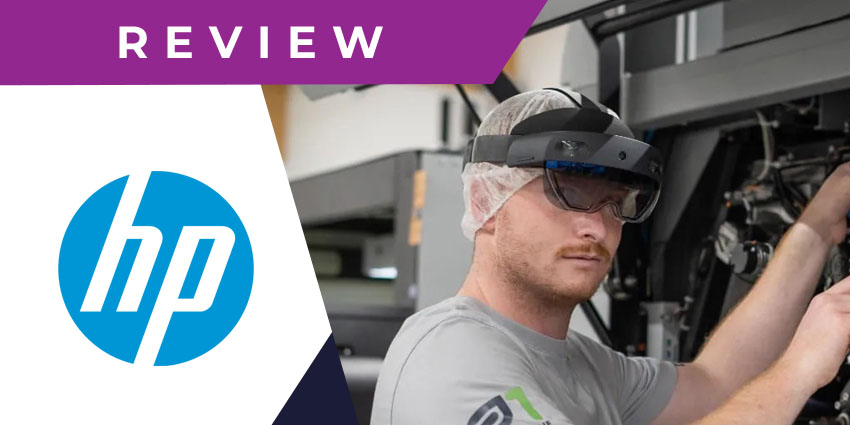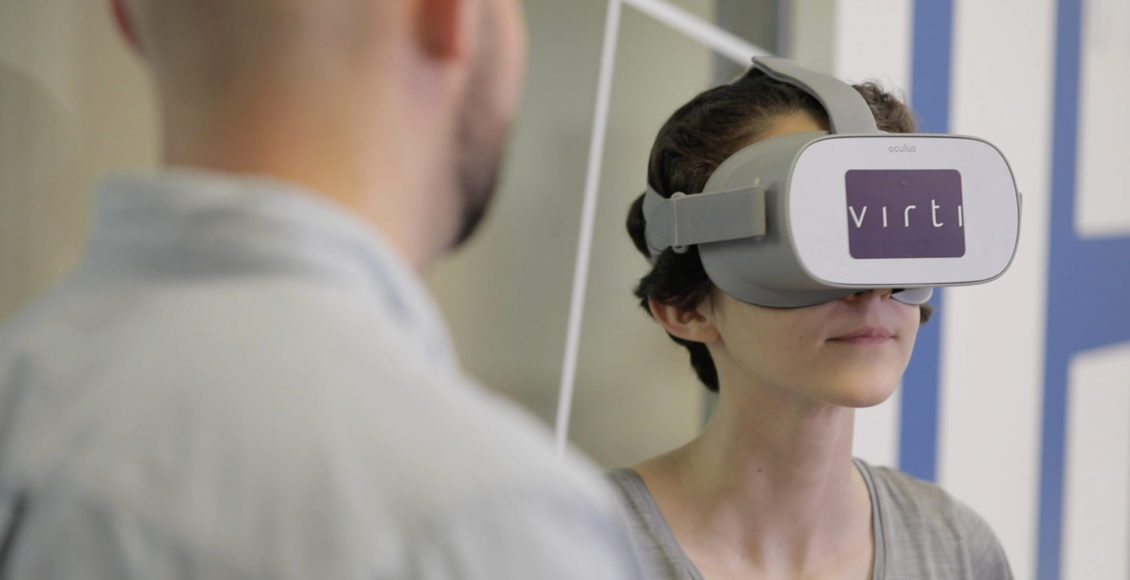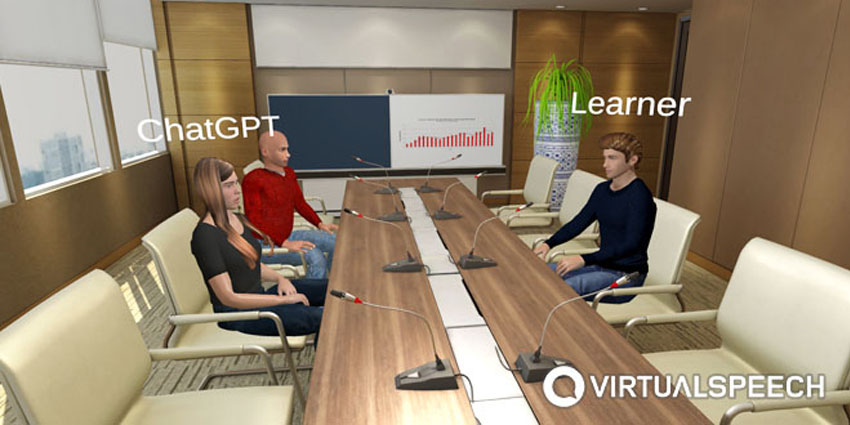ummary: With workplace dynamics changing over the last two years, the focus in 2022 is on adopting effective training strategies for a hybrid workforce. In this article, I list 20 eLearning trends you can leverage to meet this mandate successfully.
20 eLearning Trends To Leverage For Your Hybrid Workforce Training
The year 2020 was about virtual training evolution, while 2021 focused on better engaging and training virtual teams. The signs are clear; the focus in 2022 is on how to adopt effective training strategies for a hybrid workplace. But before we get started, let’s look at the key learnings from 2021 and how training evolved and advanced in the last two years.
Looking Back: The Learnings From 2021 And How Training Evolved In The Last Two Years
Learning-focused organizations were faced with the challenge of rapidly providing their workforce with virtual training. In 2021, we saw a paradigm shift to remote work, with L&D teams using a blended learning approach to implement strategies to train and engage their remote employees.
The workplace dynamics continue to evolve from a 100% remote model into a hybrid on- and off-site working model.
How Has Training Advanced In The Last Two Years?
In line with the changing workplace dynamics, the role of L&D teams has evolved too. The changed hybrid work environment requires a strategic rethinking of L&D’s contribution areas.
L&D professionals need to adopt strategies that make inclusivity and engagement a central pillar in the new work order. They need to focus on delivering greater employee experiences so that employees feel included and engaged. This implies that L&D strategies must begin with creating better employee experiences and then focus on both learner experiences as well as the learning experience.
Looking Ahead: What Are The Key Aspects To Consider When Building An L&D Strategy For 2022?
Training structures must also transform and support hybrid workforces as they evolve into a more decentralized model.
Here are some key aspects to consider when building an L&D strategy for the future:
- Understanding and integrating learner needs
- Driving autonomy among learners
- Providing room for continuous learning
- Integrating LIFOW (Learning In The Flow Of Work) resources
- Maintaining connections and outreach
- Driving collaborative learning
- Planning on how to innovate and experiment within L&D
What Are The Focus Areas For L&D Planning In 2022?
It’s imperative to stay focused on specific key areas when planning your 2022 L&D strategy. These must include aspects that demonstrate the value of the L&D team to the organization in building high-performance, fully engaged and inclusive hybrid workspaces.
Notable aspects to focus on are:
- Transforming upskilling and reskilling approaches for the hybrid workplace at the pace the business demands
- Designing effective learning and learner experiences
- Integrating measures to plan L&D’s transition from cost center to performance driver and value creator by aligning training metrics with organizational Key Performance Indicators (KPIs)
- Adopting agile learning strategies including frequent iterations of training design and development
- Driving learning culture transformation by building effective learning frameworks that support a culture of continuous and lifelong learning
- Measuring and demonstrating the value and impact of training both in terms of fiscal impact as well as the impact on building a more inclusive, engaged, and high-performance hybrid workforce
With this background, here’s my list of eLearning trends for 2022. These trends will help engage your remote learners and create a learning and performance ecosystem that can drive continuous learning and performance gain.
eLearning Trends In 2022
I have segregated and aligned the eLearning trends to the L&D charter and focus areas for 2022 in the following manner:
Section 1: In the spotlight—must-have trends to offer remote learning in the changed workplace
- Learning for all: accessibility considerations in eLearning
- Diversity, equity, and inclusion (DEI) focus
- Mobile learning
- Mobile apps for learning
- Microlearning
- Personalized learning
- Virtual training: conversion of ILT to blended or fully online learning
Section 2: Trends that match modern learners’ expectations and asks
- LIFOW
- Informal learning
- Social learning
- Curation and user-generated content
- Self-directed learning
Section 3: Trends that help you deliver engaging, high-impact, and immersive learning experiences for the hybrid workforce
- Gamification
- Scenario-based learning and interactive story-based learning
- Video-based learning (videos and interactive videos)
- AR/VR and metaverse
- Next-Gen learning strategies
Section 4: Trends that help you assess the impact of remote training and aid you in maximizing the ROI
- Learner analytics
- Learning Experience Platforms (LXPs)
- Artificial Intelligence (AI) in learning
…
Section 3: eLearning Trends In 2022 That Help You Deliver Engaging, High-Impact, And Immersive Learning Experiences For The Hybrid Workforce
Gamification
Traditionally, because of the time and distance gaps among trainers, learners, and the content, eLearning has always had an “engagement challenge.” With the broader evolution of hybrid workplaces, those challenges have expanded. Work from home (WFH) mandates have introduced more “learner disconnect” hurdles, adding to the engagement challenge.
In a hybrid workplace, where there are already plenty of non-work-related distractions in the environment, learners are more easily disengaged when presented with run-of-the-mill training courses. Therefore, more L&D professionals resort to game-based or gamified learning to drive engagement.
Various corporate training needs can be addressed with the help of gamification-based techniques. A well-crafted gamification strategy for serious learning (through VILT/blended/fully self-paced online training) will help you achieve the following:
- A high engagement quotient
- Better completion rates
- Higher recall and retention
- Swifter application of the acquired learning on the job
- Improved proficiency (practice and advance to mastery)
- Influence or trigger behavioral
With reducing costs, shorter time to design and deploy, and several use cases and success stories, this trend is worth integrating in 2022 to enhance the engagement of your VILT/blended trainings as well as your fully online trainings.
Scenario-Based Learning And Interactive Story-Based Learning
The key element to any eLearning program is learner engagement. Getting employees engaged in eLearning in the current remote workplace environment filled with distractions is often challenging.
Scenario-based learning is a highly immersive learning strategy that can be used across corporate trainings—notably compliance, soft skills, professional skills, product, and sales trainings. Learners can practice in a safe environment, understand the impact of their choices, and learn from their mistakes. It can also be used alone or paired with interactive story-based learning to create higher retention and recall, leading to a memorable and sticky learning experience.
Scenarios and stories can be leveraged to drive attitudinal change and sensitize learners on specific issues. You can also drive the desired action in learners through scenario-based learning. They can also be used to simplify a complex subject or to convert an abstract concept into something that is relatable and easy to assimilate for remote learners.
This trend is worth a serious look in 2022 to engage your remote learners and trigger change in thinking, attitude, or behavior.
Video-Based Learning (Videos And Interactive Videos)
During this pandemic, video consumption has been gaining traction, and L&D teams are seeking ways to tap videos effectively for training.
The versatility of videos allows them to be applied across the learning and performance improvement mandate that enables learning journeys from a distance:
- To create a buzz or awareness and establish WIIFM (What’s In It For Me)
- To establish context or teach concepts
- To deliver learning followed by practice, application, and summaries
- To checkpoint learners’ progress and understanding
- To reinforce and offset the forgetting curve
The usage of videos for learning will continue its upward trend in 2022. Notably,
- Microlearning videos and learning pathways („read more“/“explore further“) curated from public domain assets will seem to be on the rise.
- There will also be an increase in the application of interactive videos that provide a high degree of engagement through learning interactions and assessments, resembling traditional eLearning courses. Interactive videos can be tracked from the LMS, unlike classic videos.
- 360-degree videos with interactivities overlaid on them produce a highly captivating watch and immersive learning experience.
This trend is also a must-have in 2022 in your training delivery in order to offer highly engaging and immersive learning experiences.
AR/VR And Metaverse
Immersive learning (with respect to virtual training) is training that’s facilitated through virtual and artificially augmented environments and moves learners away from the basic PPTs, visuals, videos, and audios. Specific measures, like spaced repetition, can be used to effectively trigger behavioral change too.
The cost and lead time to develop these solutions can be reduced by using easy-to-implement solutions from players like Adobe and Trivantis as well as niche AR/VR platforms. Several use cases such as microlearning-based nuggets with AR/VR are also being increasingly used. With the benefits of lower costs and higher impact seen in the adoption of this solution, we will certainly see a further increase in its application.
The next level is Mixed Reality, now being interpreted as the metaverse.
The concept gained more popularity during the pandemic, as lockdowns pushed more and more people to share online spaces for longer hours. People will have the capability to connect the real with the virtual and vice versa. These experiences can mimic the settings where learners will not only learn better but also apply the knowledge learned through such training in “real” environments.
The successful development of the metaverse is expected to be driven by Augmented and Virtual Reality (AR/VR) gadgets, which act as the experiential layer. It will change the way learners/employees/employers collaborate and interact across digital and physical spaces in the hybrid workplace.
As these solutions become more affordable and can be offered to augment or supplement formal training in 2022, you will certainly see more traction in the future.
For example, you can merge gamification and microlearning and offer them as mobile learning or mobile apps for learning as shown here:
- Gamified mobile apps for learning
- Gamified microlearning.
- Gamified Virtual Reality
- Gamified interactive videos
You can apply infinite variants, including microlearning nuggets in the gamified learning journey that also showcase immersive learning techniques like Virtual Reality. On the other hand, you can make use of an entirely VR-driven learning path that is gamified.
If you haven’t thought of Next-Gen learning strategies yet, do so in 2022!
Quelle:
Foto: gettyimages/Cecilie_Arcurs




